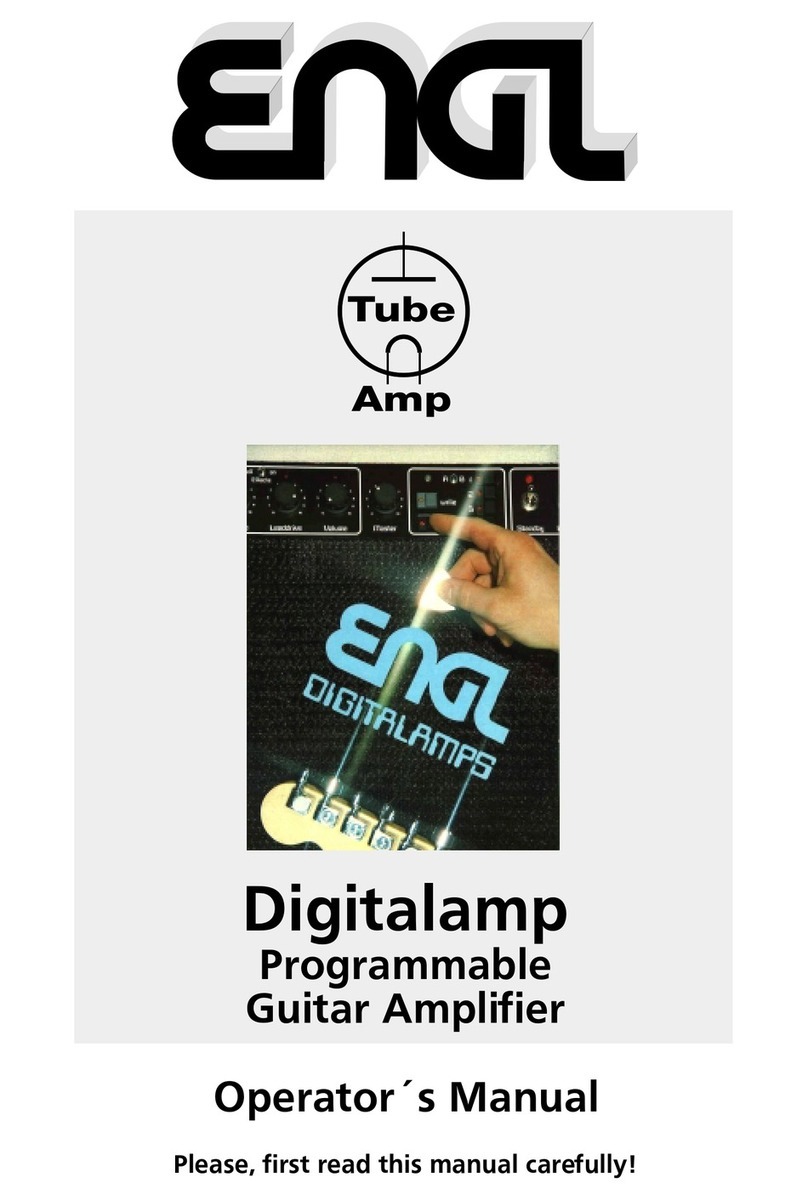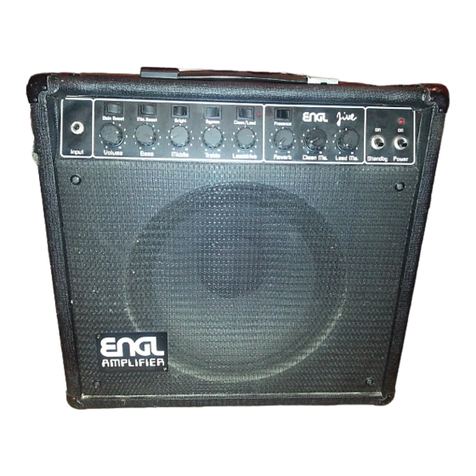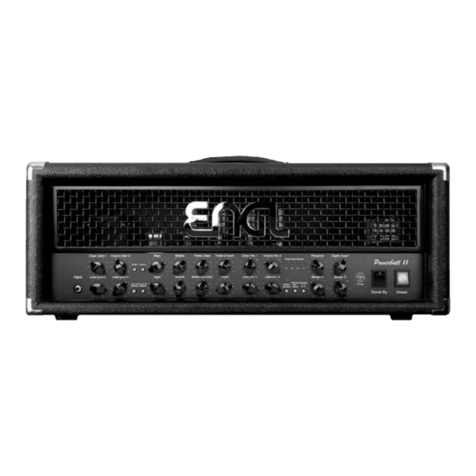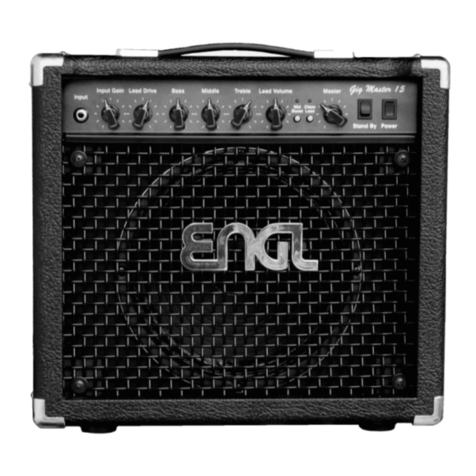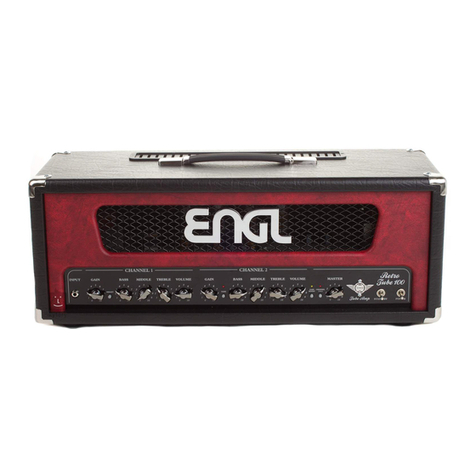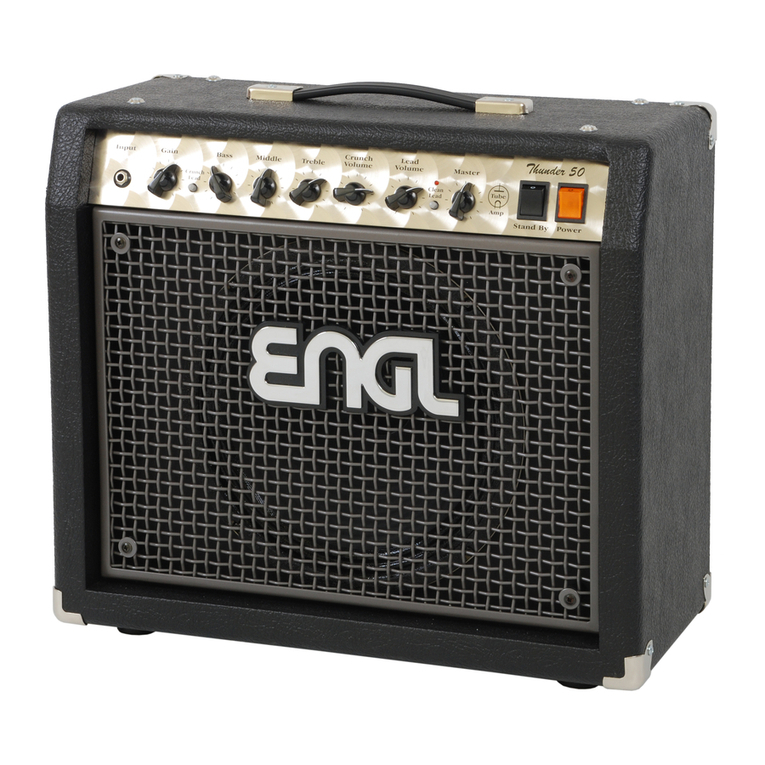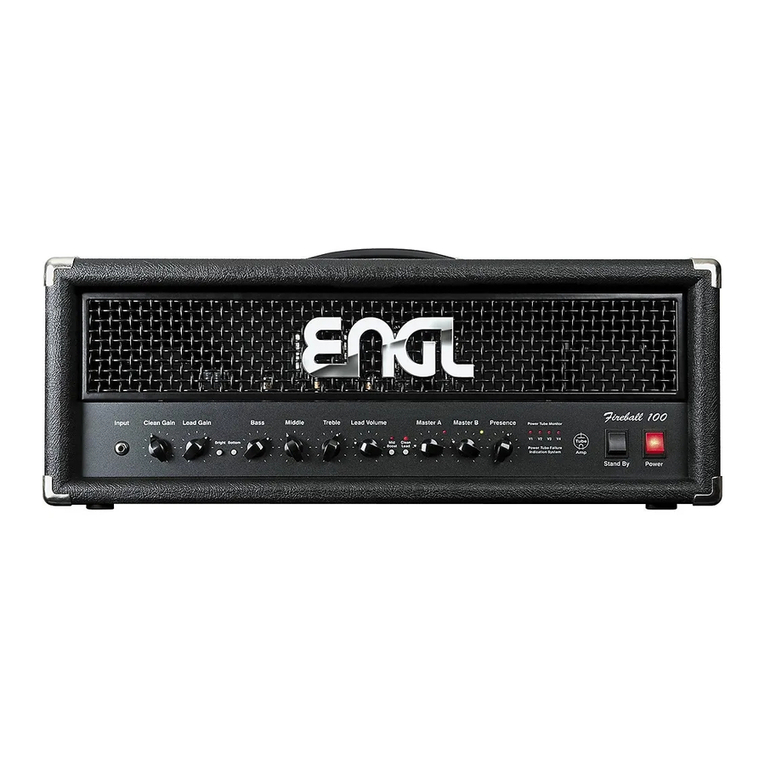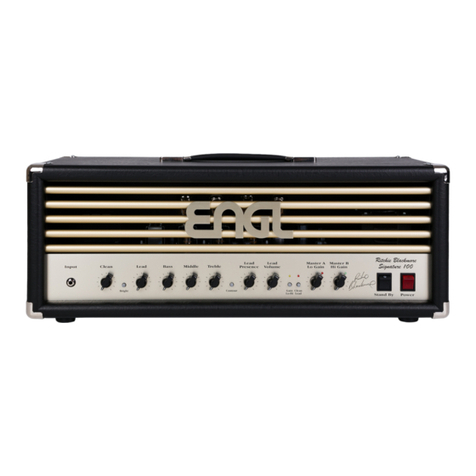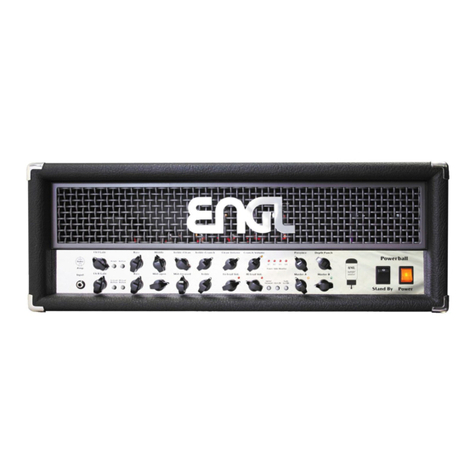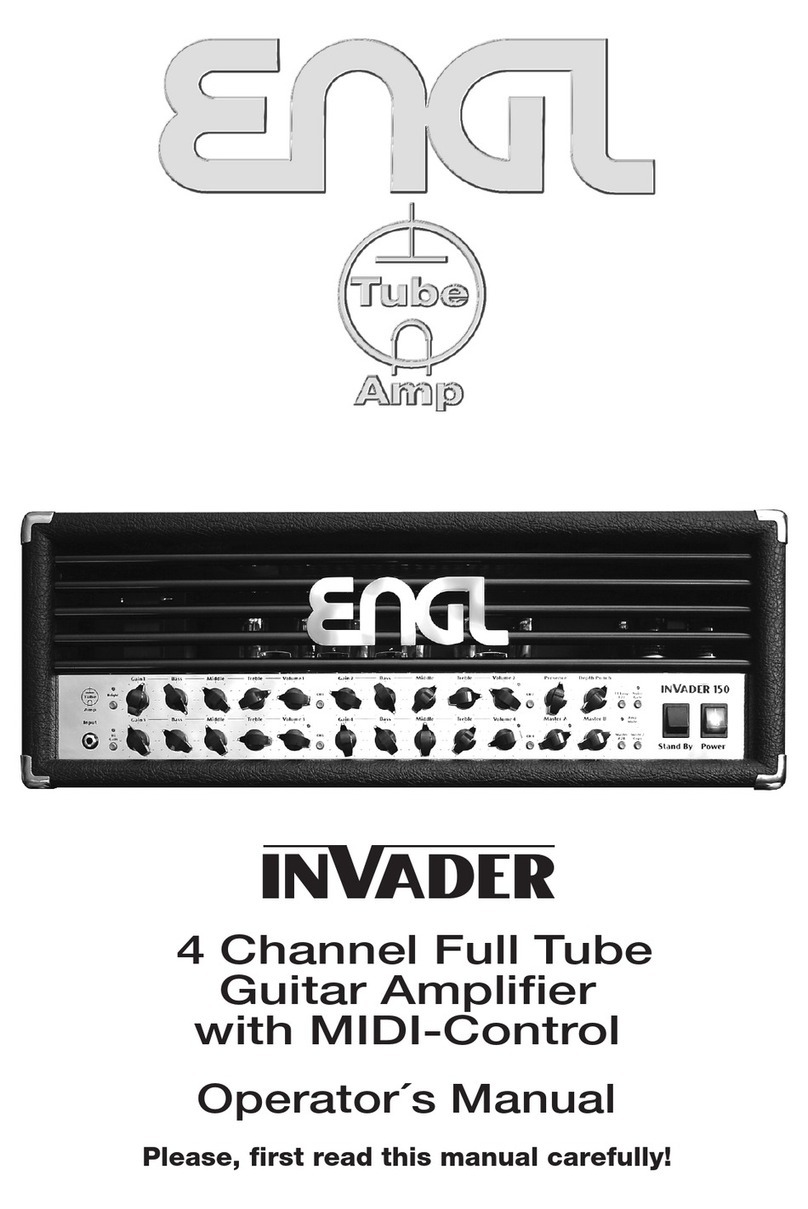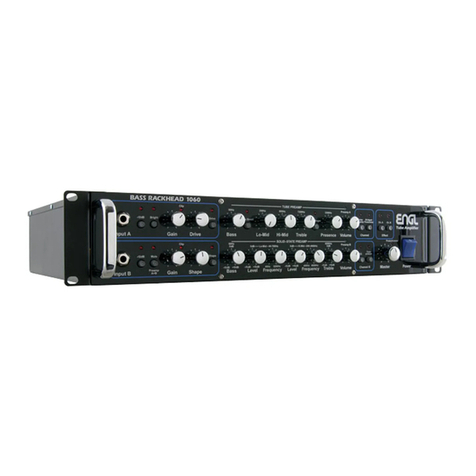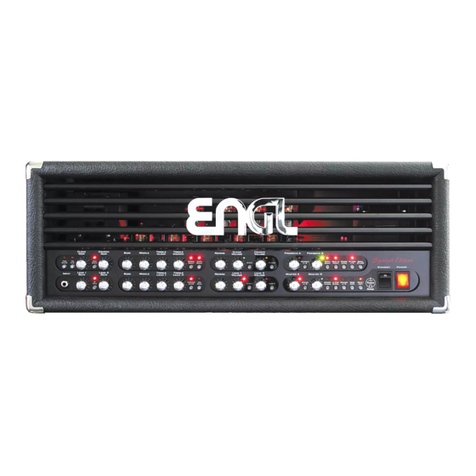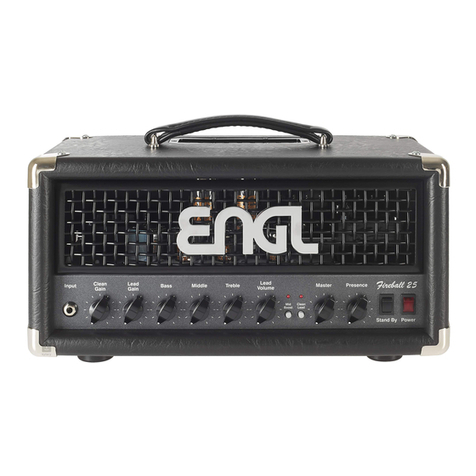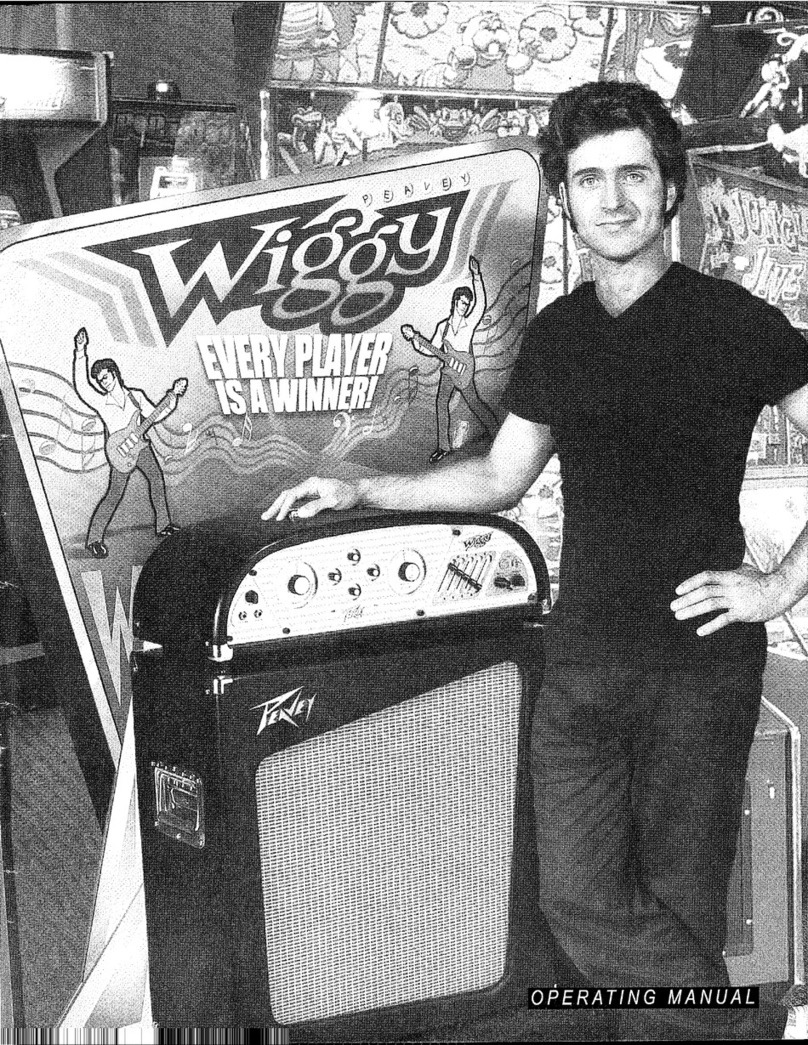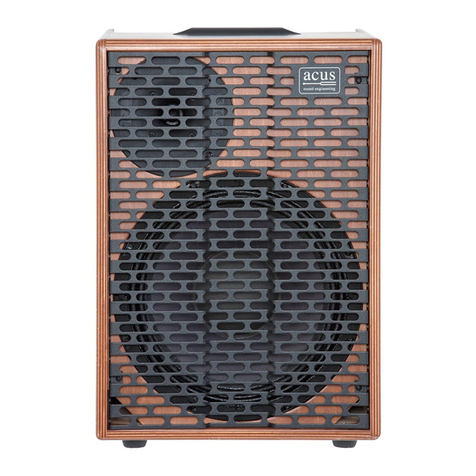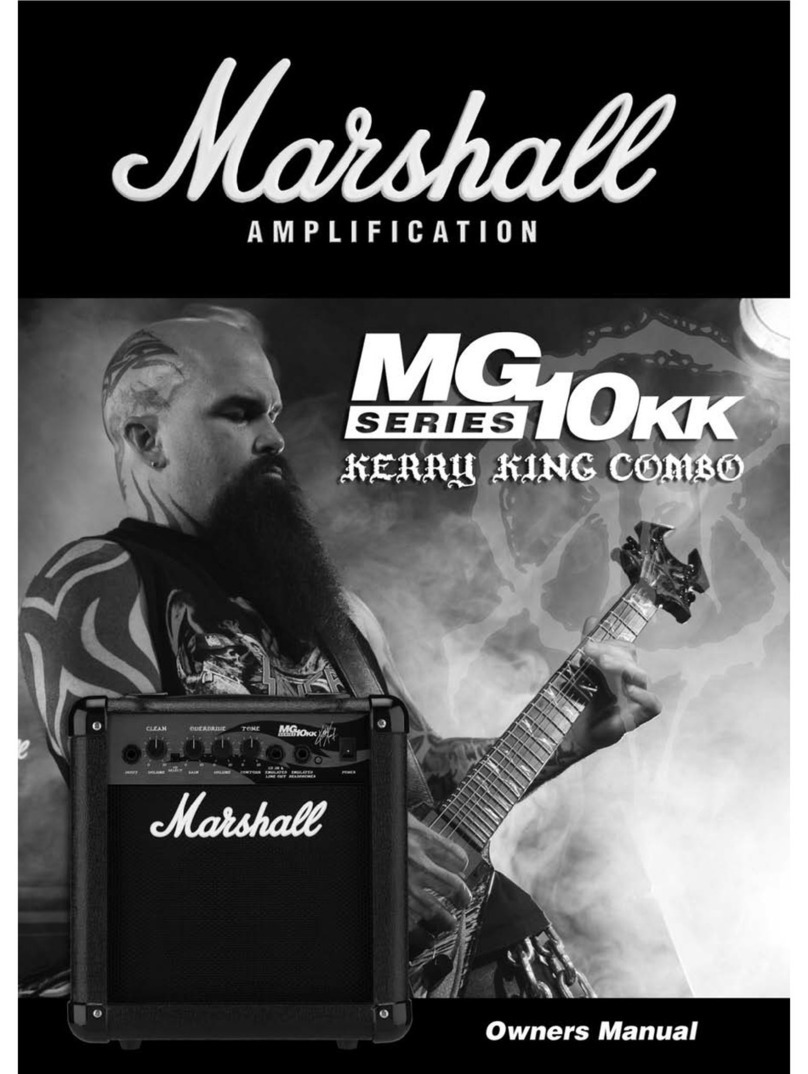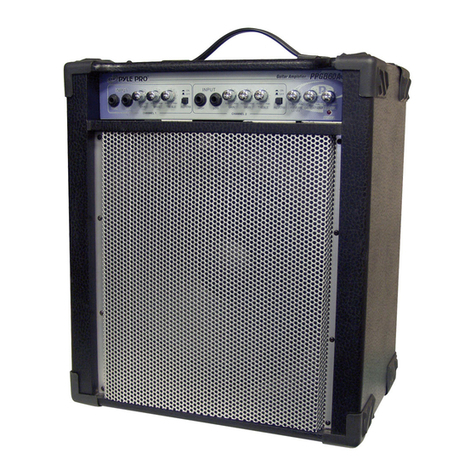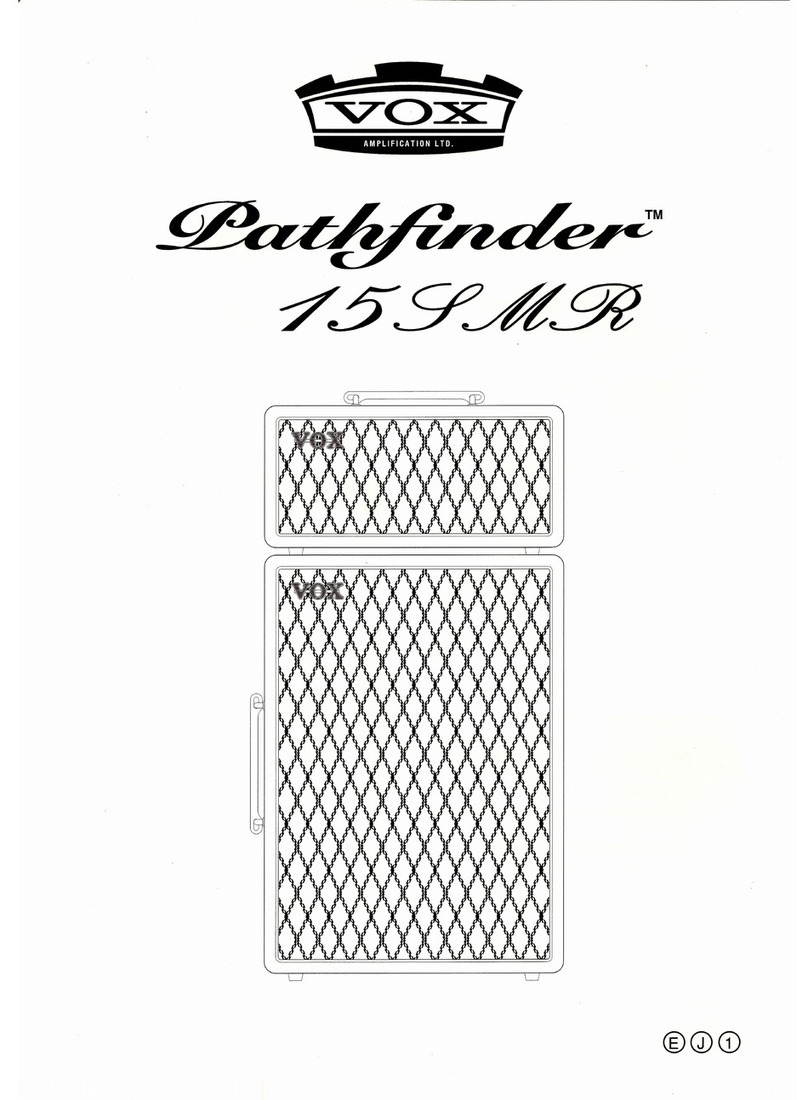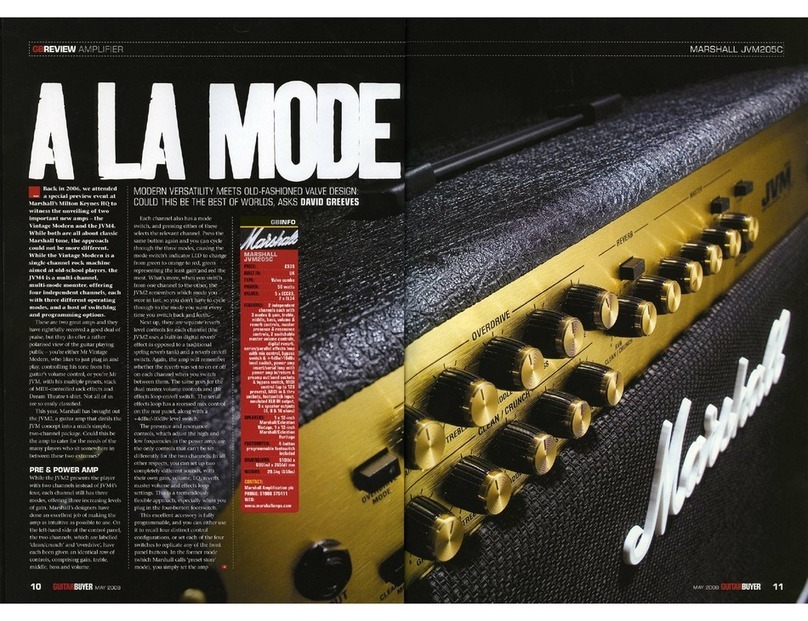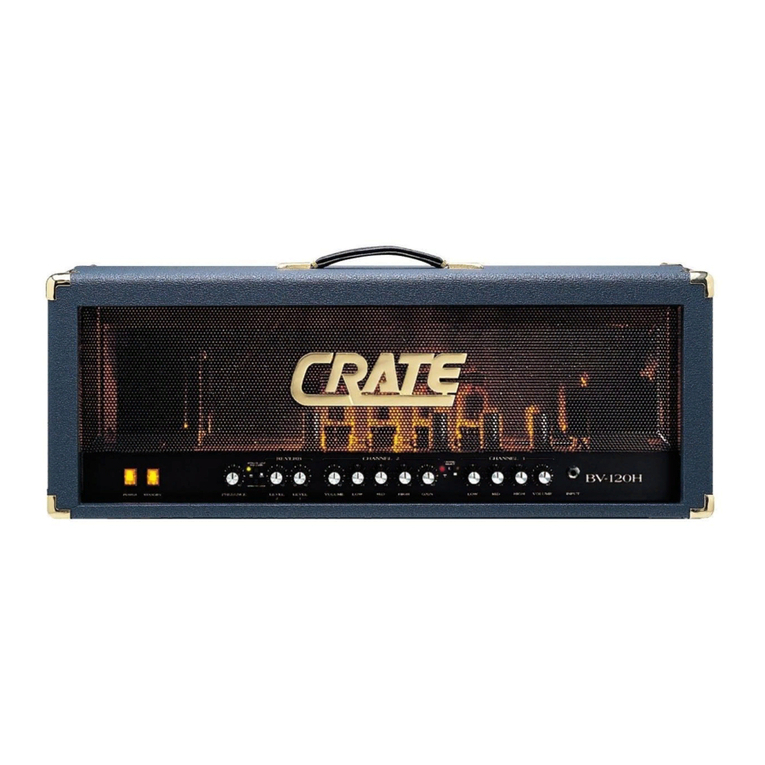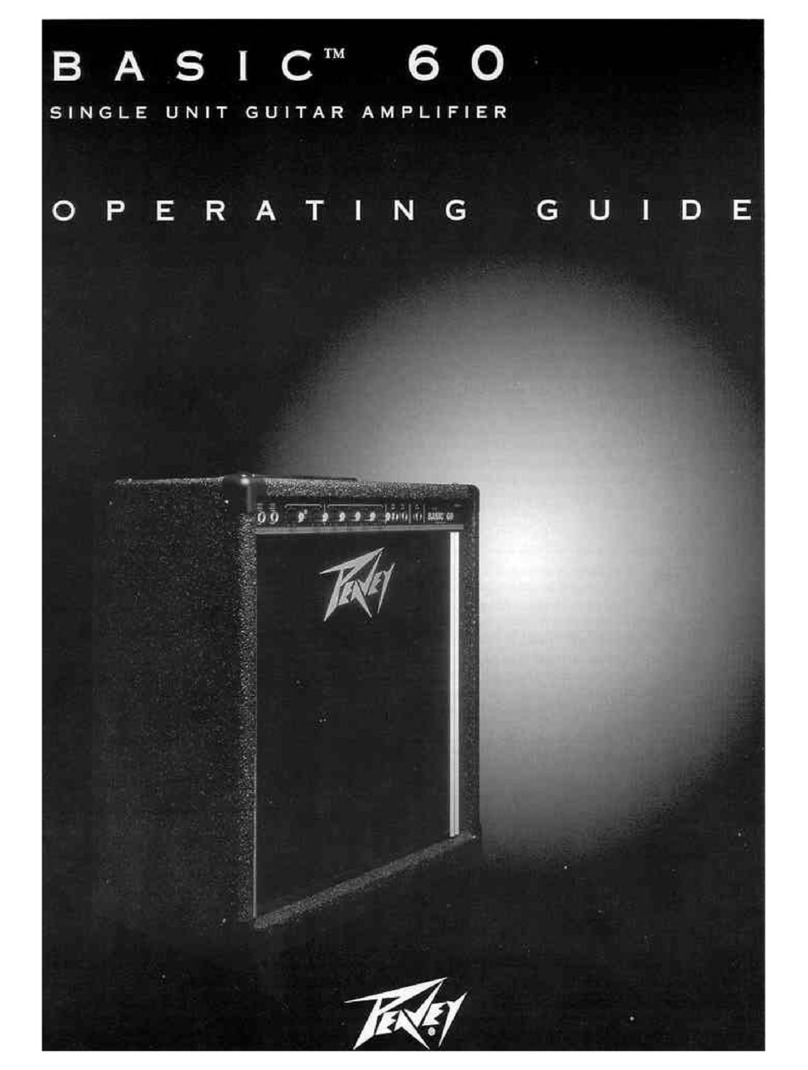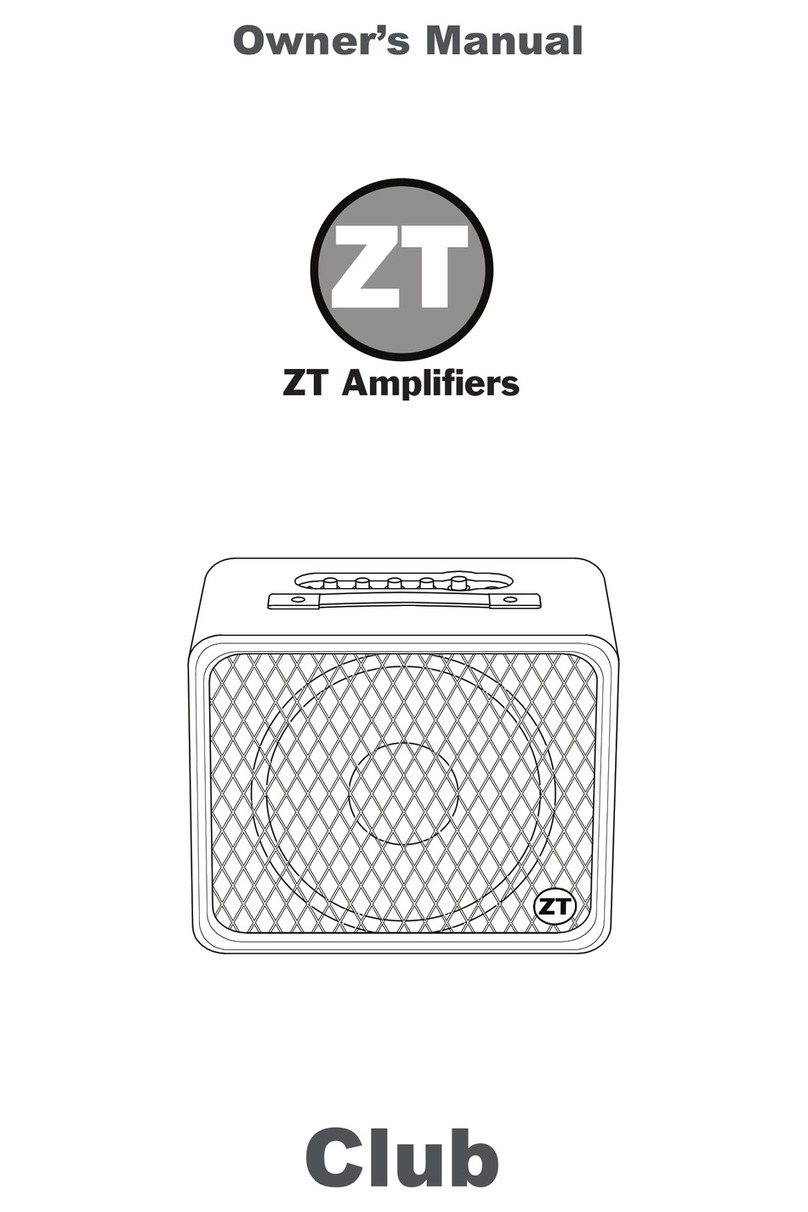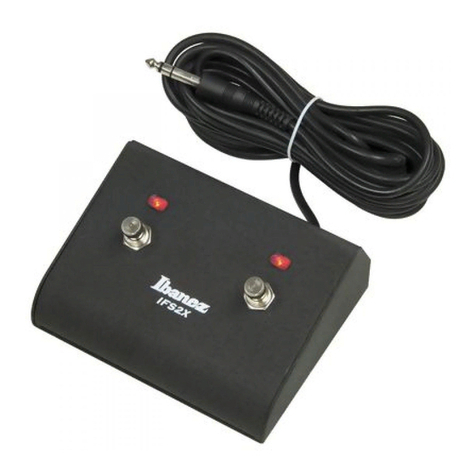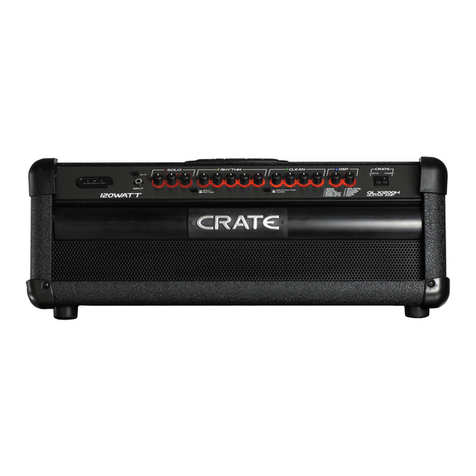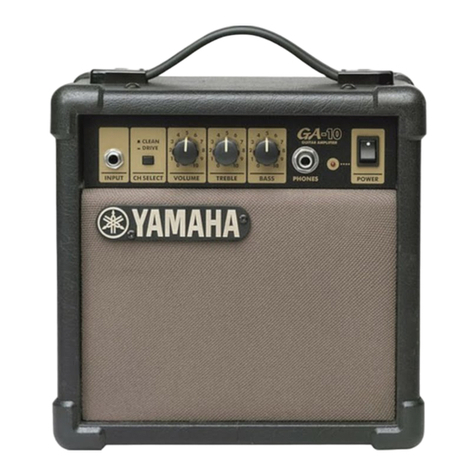TIP 1
GAIN settings depend on what type of pickups are installed in your guitar. The recommended setting for
humbuckers or active pickups lies between the 11 and 2 o’clock positions, and 1 to 4 o’clock for single
coils, for a pure clean response. More over increased gain will produce a touch of overdrive in the
preamp. If your pickups
are of the ultra-high output variety ( > 1V or 0dB ) you may have to back off the guitar’s volume to
achieve a truly clean tone.
TIP 2
For crisp glassy tones, set the BRIGHT switch to the HI position. This setting boosts the treble response
of muddy pickups.
TIP 3
In order to familiarize with your amp and its clean tone, set these voicing controls between the 12 and 3
o’clock´s position. Try it on for size and then adjust the controls according to your personal taste and the
accustic properties of the room.
TIP 4
The CLEAN BOOTS function´s Lo position is ideal for crisp, clear clean tones. The Hi position, depending
on the GAIN control setting, is great for rhythm or crunch sounds that, due to the higher volume and
increased sustain, are also suitable for leads. In combination with the VOLUME LEVEL SWITCHING (V.L.S.)
function, the CLEAN BOOST is a very practical feature: If there is a footswitch or a looper system connected
to jack 31, you are able to boost the Clean channel in addition to a higher output volume level. To do this,
set the CLEAN BOOST pushbutton to the "on" position. In the "off" position of this button, only the volume
level is increased via the V.L.S. function.
TIP 5
To get an idea of the Crunch and the Lead tone of this amp, we suggest you set all tone control pots to
the 12 o’clock´s position and then adjust the sound according to your taste, and the room’s ambience.
TIP 6
The ROUGH sound character (heavy) is great for rhythm playing with a pronounced bottom end and
gritty, biting highs. You should use the BASS knob (15) and the DEPTH BOOST button (24) sparingly in
conjunction with this feature (especially if you connect a 4 x 12" cabinet) ; the PRESENCE RATIO control is
recommended between 10 and 2 o´clock´s position.
The SMOOTH sound character is most effective for lead-playing. In spite of its creamy tube tone, its
pronounced mids deliver enough punch to cut through! Try on PRESENCE RATIO settings between 11
and 3 o´clock and activate the DEPTH BOOST. Extremely high gain and volume levels can produce strong
feedback between the speakers and your guitar´s pick ups. Cut back on the GAIN, TREBLE and PRESENCE
RATIO settings to avoid undesirable feedback.
TIP 7
Harmonic distortion in the Crunch and Lead channels generates a broad spectrum of overtones, adding a
great deal of upper frequencies to the signal. The PRESENCE RATIO control reduces the amount of treble
in the poweramp in relation to the Clean treble setting. The PRESENCE RATIO control turned all the way
up is equal to the poweramp presence adjustment in the Clean channel. The adjustment of the PRESENCE
RATIO control depends on the selected sound character (see even TIP 6) the volume and your taste.
TIP 8
The switching functions CHANNEL (10), CRUNCH /LEAD (21), the REVERB (on/off) and the (MASTER-)
VOLUME LEVEL SWITCHING can also be executed via a Looper/switcher or other MIDI devices that
feature 4 freely-programmable switching inputs. Depending on the type of MIDI device, you may have
to split the FOOTSWITCH stereo jacks into two mono jacks. Each switching function requires the
mono or stereo contact (see 30 and 31 for assignments) and the ground!
NOTE! If the switching and signal grounds are identical in the MIDI device, then you may
encounter a ground loop, especially if the amp and device (e.g. FX processor) exchange signals!
8
